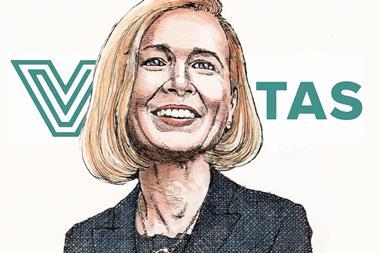AUSTRIA - The multi-employer pension fund ÖPAG and the University of Vienna have developed an ALM tool to help the fund simulate future developments around their assets and liabilities.
Matching assets and liabilities can be difficult for Austrian funds as clients with more than 1,000 beneficiaries can choose to hold their own portfolio within the pension fund and those with fewer employees can choose between different portfolios to join, so a tool has been created to help teh ALM process.
ÖPAG currently has 27 of these porfolios, called investement and risk communities (Veranlagungs- und Risikogemeinschaften, VRG) - all of them with different asset allocations according to the clients' wishes.
So ÖPAG asked the statistics department of the University of Vienna to come up with a simulator tool which would better assess the impact the age structure of its clients will have on the funding and contribution levels, as well as a change in longevity assumptions and certain asset allocation decisions.
"The tool allows stress-testing on the liabilities side," said Ronald Hochreiter from the University of Vienna at an ÖPAG event in Utrecht, The Netherlands.
Johannes Ziegelbecker, the outgoing head of ÖPAG, noted the tool will also be useful to simulate individual investment preferences for clients in the life-cycle model.
The ALM simulator is ready to be used by the fund but Ziegelbecker said "the true benefit will only be seen once the first data packages have been evaluated".
Rudolf Böhm, his colleague on the managing board, told IPE the fund had not yet thought whether to use the tool commercially and sell it to other Austrian pension funds.
"If we do we will have to decide whether we want the advantage on the market or the money."
Ziegelbecker added he hopes the simulator will also help to communicate to people the importance of stocking up the buffer in the fund.
"Austrian pension funds have too little buffer," said Ziegelbecker.
Estimates suggest pension fund solvency is funded at between 100% and 110%, compared, for example, to 130% which the Dutch fund PFZW is aiming for.
The ÖPAG suggested the Austrian problem is members often chose to leave gains in the portfolio rather than putting it aside as a buffer.
"The tool does not enable us to see the future but it will help us to make better decisions," Ziegelbecker added.
He explained the fund has reduced its overall equity exposure to around 14% since the start of the year, which is below half of what is set down as strategic allocation level. Furthermore, it has hedged some of the remaining equity risk with derivatives.
"However, we did not go down to 0% as we did not want to miss opportunities," the outgoing ÖPAG- head said.
If you have any comments you would like to add to this or any other story, contact Julie Henderson on + 44 (0)20 7261 4602 or email julie.henderson@ipe.com












No comments yet